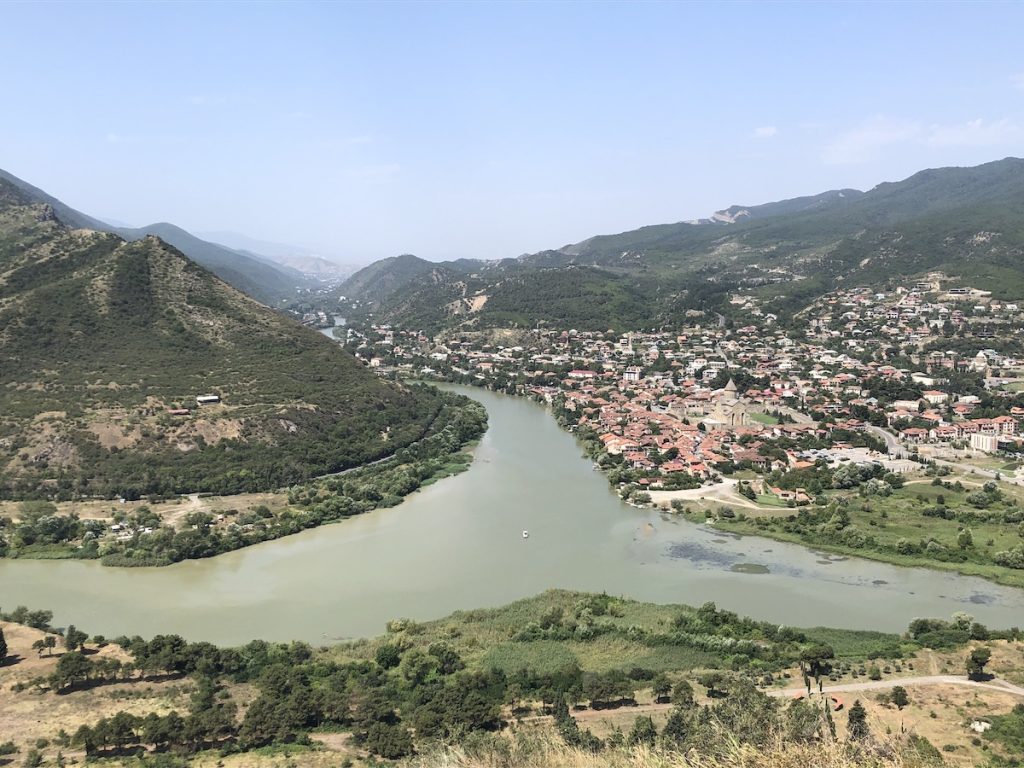
When a morning starts with obscure theology, you know it’s about to go off the rails.
We hadn’t been driving for more than five minutes when Mirian launched into an earnest lecture on celestial theories of contact with other realms, and how the soft spot in a baby’s head is actually a portal that closes as we get older, cutting us off from universal Truth.
I’d hired a driver to visit two towns beyond Tbilisi on the same day. Not going by public transport gave us an extra day in the capital. And the cost of a car was the same as a group tour for two, with the added bonus of not involving tours of ceramic factories that always turn out to be gift shops.
Mirian seemed like a nice enough guy. Online reviews raved about how informative he was, and how willing to use his phone to translate in his desire to communicate. But none of them mentioned his own raving pronouncements about other dimensions at eight in the morning.
His broken English narration was a mix of random Georgian history taken from vastly different periods, conspiracy theories about Georgia as Atlantis, and reasons why Georgia was either the best at everything despite being so small or the origin for everything — including the human race and the bloodline of all kings everywhere.
“The Imperial family of Japan also has Georgian blood,” he said with great conviction.
I heard my wife take a deep breath and sit up straight in her seat. Thankfully, we arrived at Svetiskhoveli Cathedral before she had a chance to get in a fight over the celestial origins of Amaterasu Ōmikami.
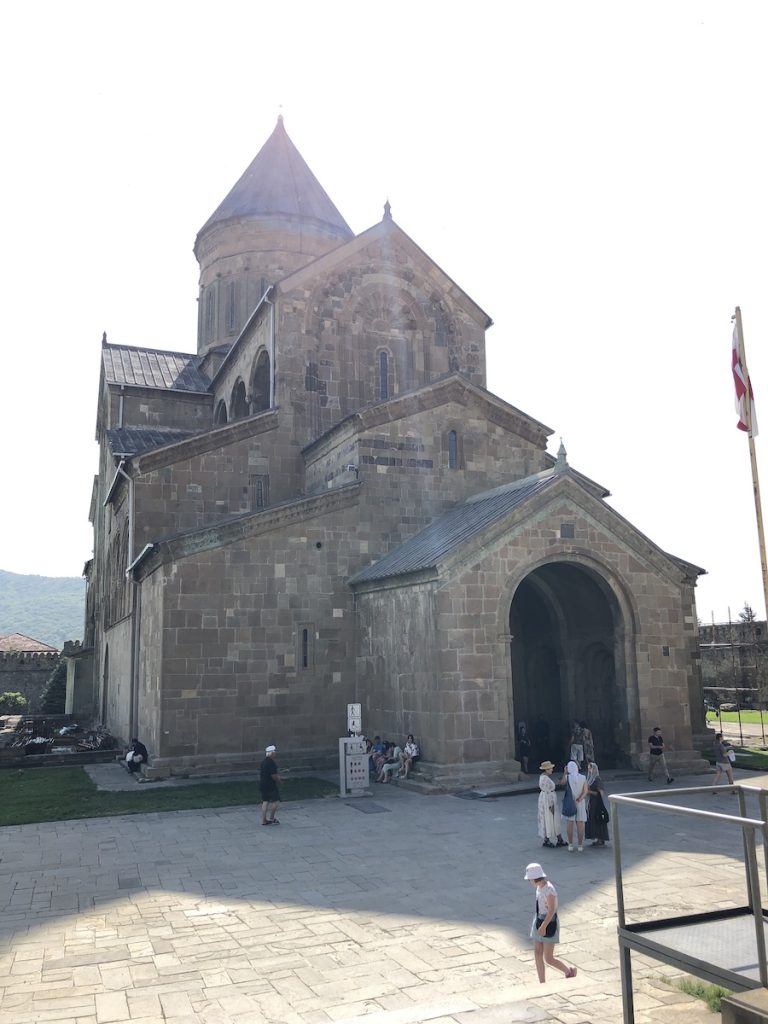
The church dominates the centre of Mtskheta, one of the oldest continuously inhabited cities in the world, and capital of the East Georgian Kingdom from the 3rd century BC to the 5th century AD.
The busy little town sat at the intersection of trade routes where the goods and ideas of the Roman and Persian Empires mingled with those of Syria, Palestine and Byzantium. It’s also where Christianity was proclaimed Georgia’s official religion in the year 337.
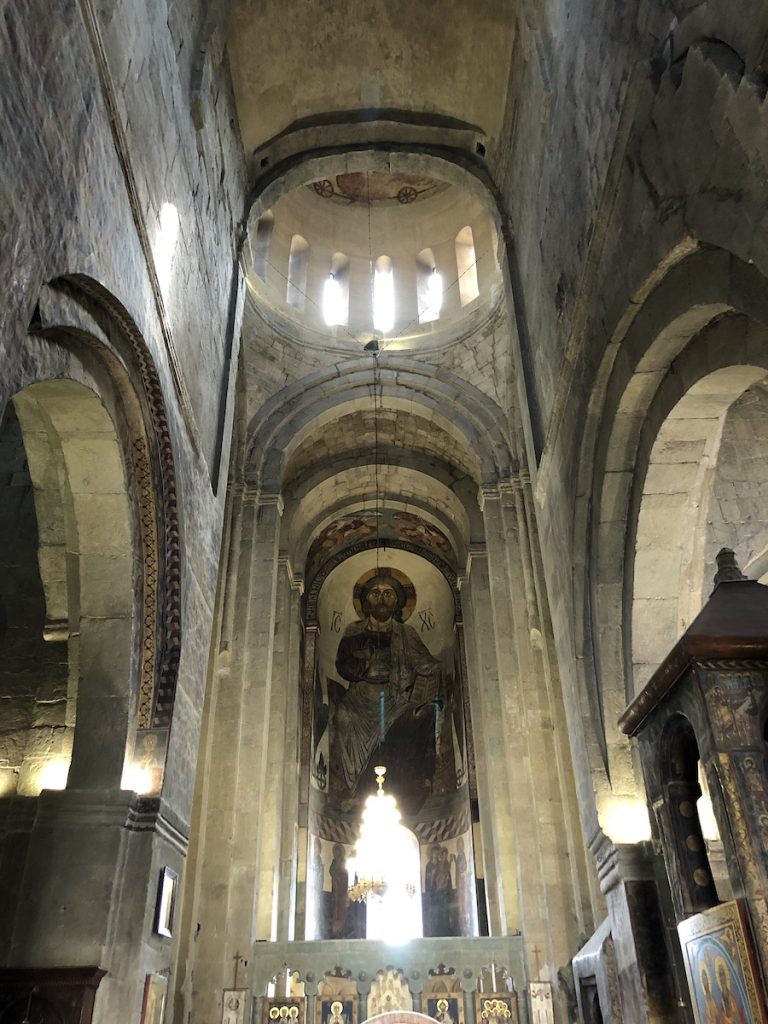
Mtskheta’s commercial importance faded when the capital was moved to Tbilisi in the 6th century, but Svetitskhoveli Cathedral is still the spiritual heart of the country. Coronations were held here, and Georgian kings were buried here. It’s also the burial site of Christ’s mantle — not the one from his fireplace, the one he was wearing when he got nailed up.
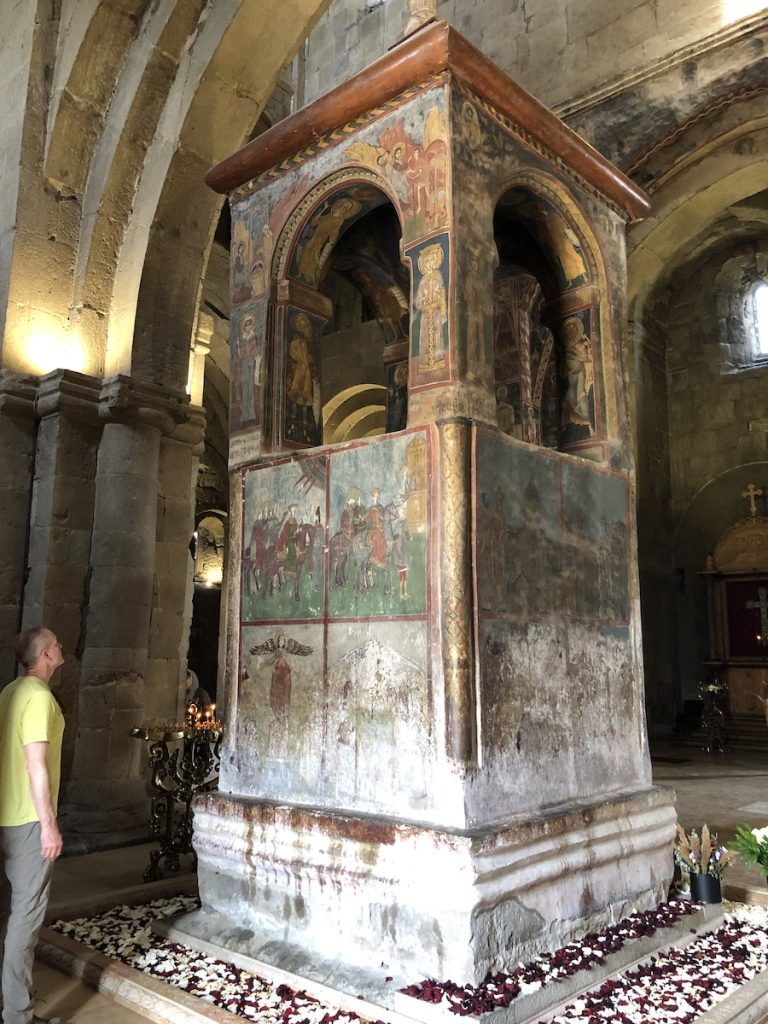
The present towering cross-in-square structure was finished between 1010 and 1029, on the site of earlier churches that date back to the 4th century. Defensive walls were added in 1787. The entire place is a masterpiece of the Early and High Middle Ages, and to my mind, Mtskheta’s most interesting church.
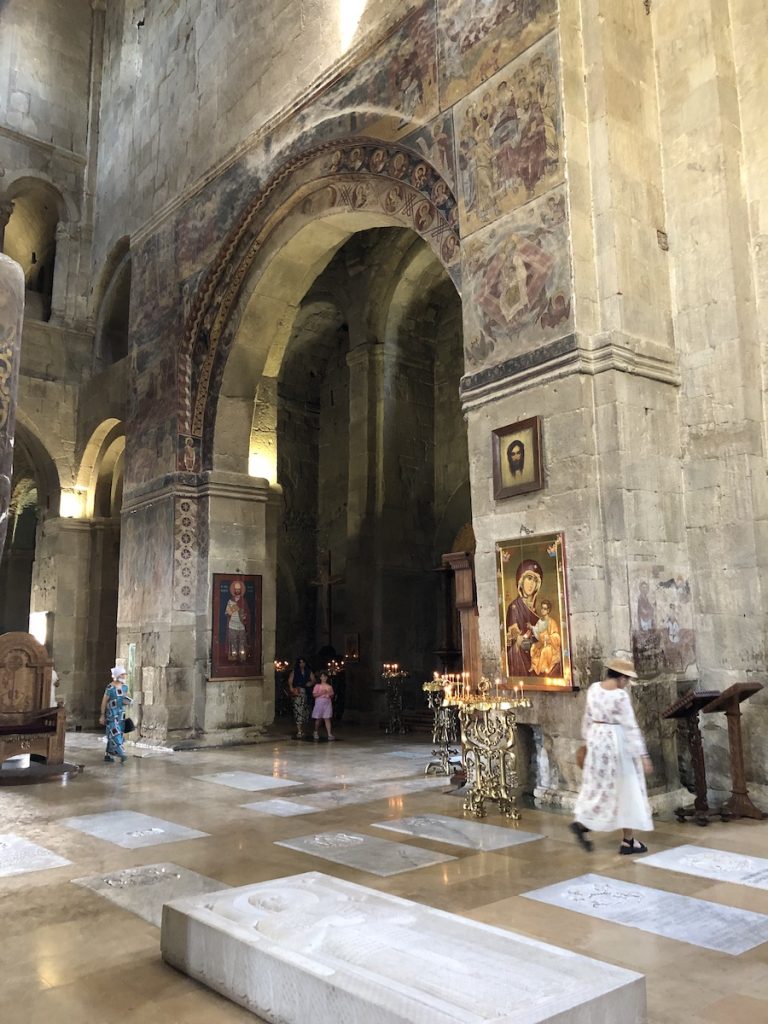
It wasn’t the only church we would shuffle through in respectful silence, either. Several more are listed with UNESCO, and one was a two minute drive away.
The little domed church on the grounds of Samtavro Monastery is said to have been built by St. Nino of Cappadocia, the woman who came here to convert Georgia to Christianity in the 4th century.
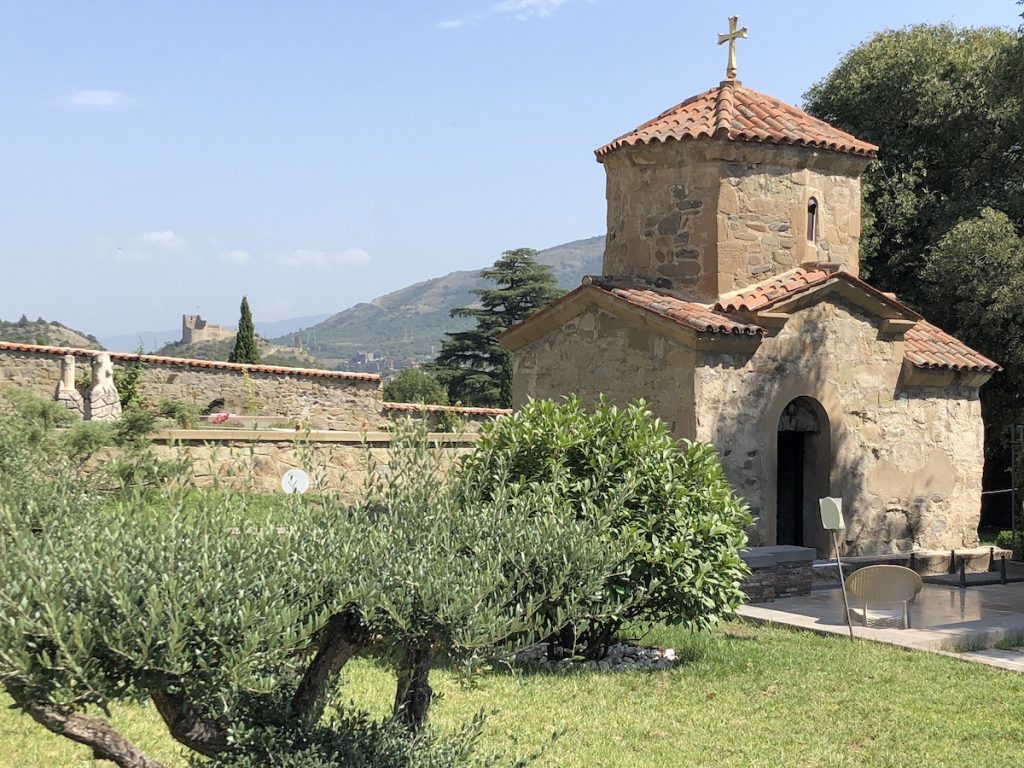
The large church next to it was built by King Marian III — our driver’s namesake — in the 4th century and reconstructed in the 11th century. It still holds his tomb and that of his wife, Queen Nana.
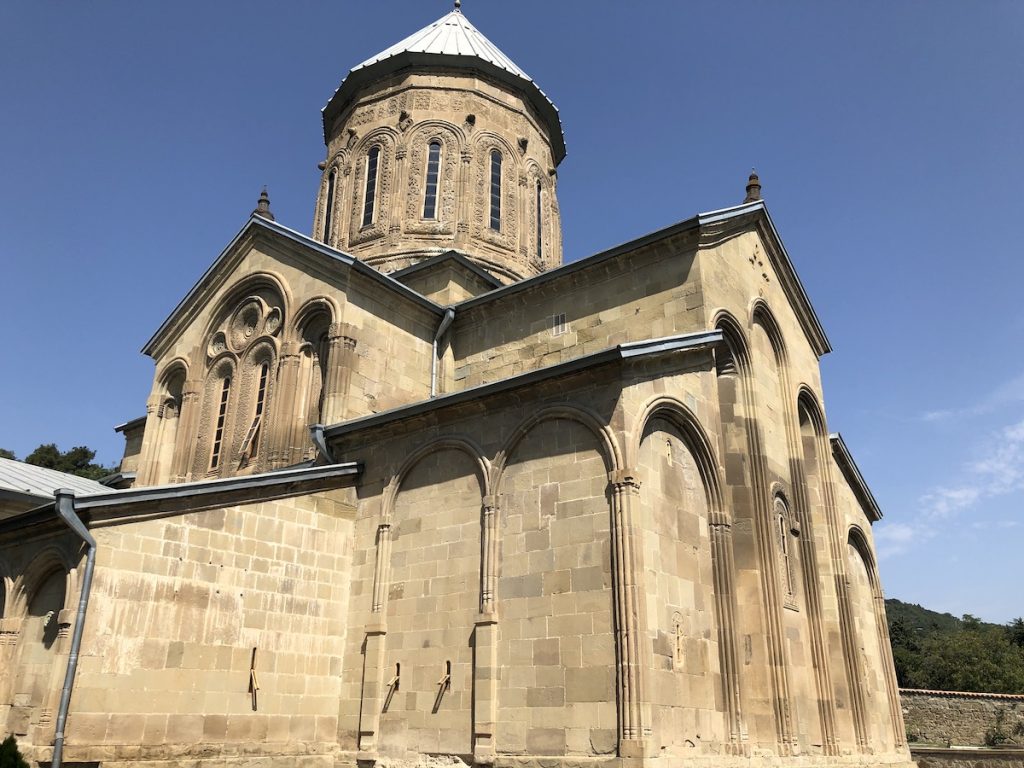
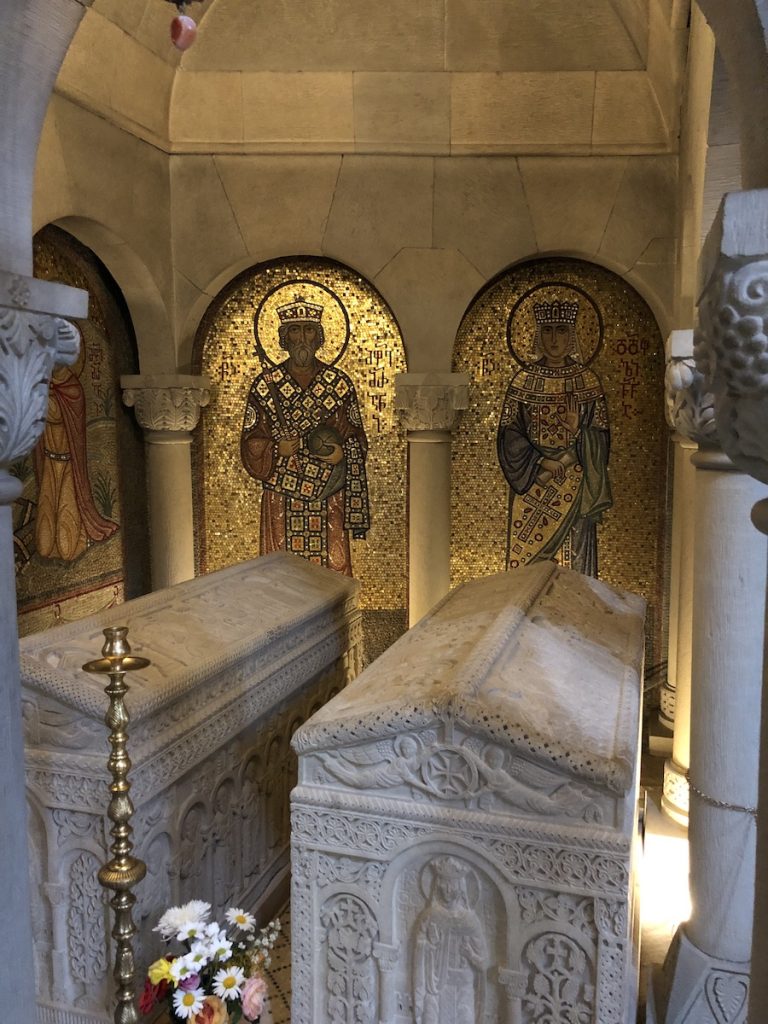
A dim candlelit corner of the church also holds the robed remains of St. Gabriel Confessor, who was canonized in 2012 after a lifetime of piety. He’d spent his last years in the convent of St. Nino on these grounds, after setting fire to a banner of Lenin during an International Workers’ Day parade in Tbilisi in 1965, being tried and then confined to a mental hospital as a psychotic.
Pious Georgians still light candles next to his remains, years after statues of the bald little monster whose banner he burned were pulled down and smashed into rubble.
Mirian was waiting in the parking lot when we emerged squinting into the sun. The windows were down in the midday heat and he was reclined, fast asleep, with hands clasped over his belly, no doubt dreaming of a better time when Georgians ruled both the known and the Atlantean world.
The last church we visited in Mtskheta is surely the most well known. It’s definitely the most-visited. The small parking lot was jammed with tour buses, and vendors selling overpriced trinkets and lukewarm juice.
“Be sure to look for the Arian symbol over the door!” Mirian shouted as we walked away from the car.
Set high atop a mountain overlooking the confluence of the Aragvi and Mtkvari Rivers, Jvari Monastery looks as thought it has grown from the living rock.
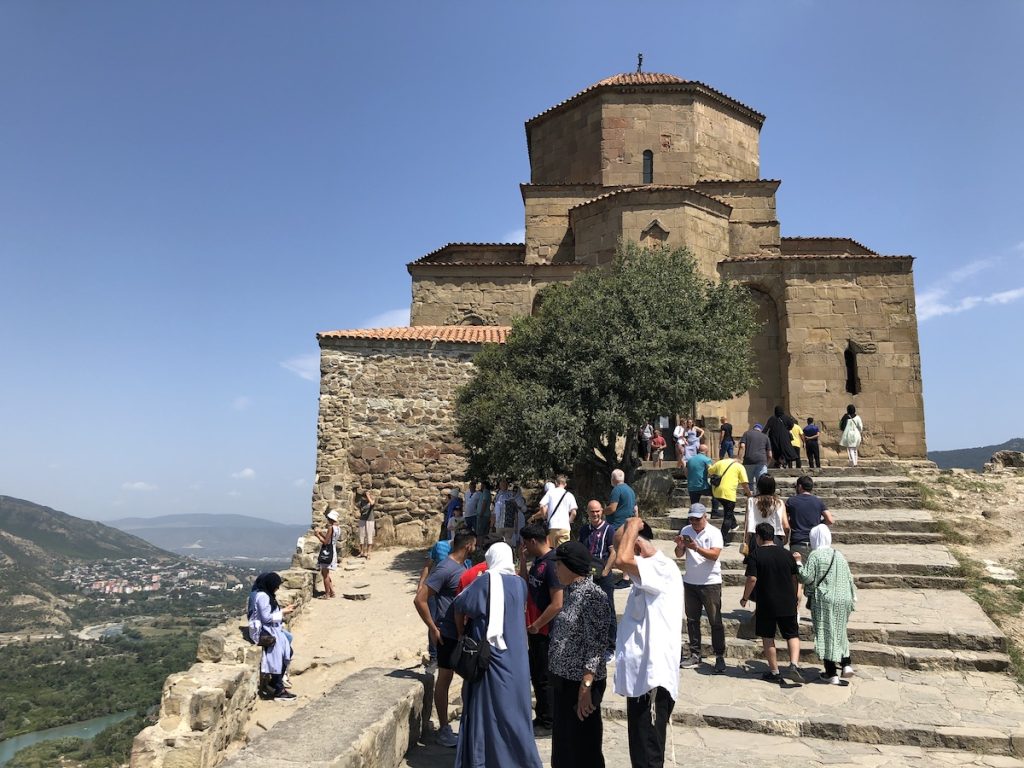
Built between 590 and 605, Jvari has survived largely unchanged, making it a rare example of an Early Medieval Georgian church, as well as the model for many subsequent ‘Jvari type’ churches in both Georgia and Armenia.
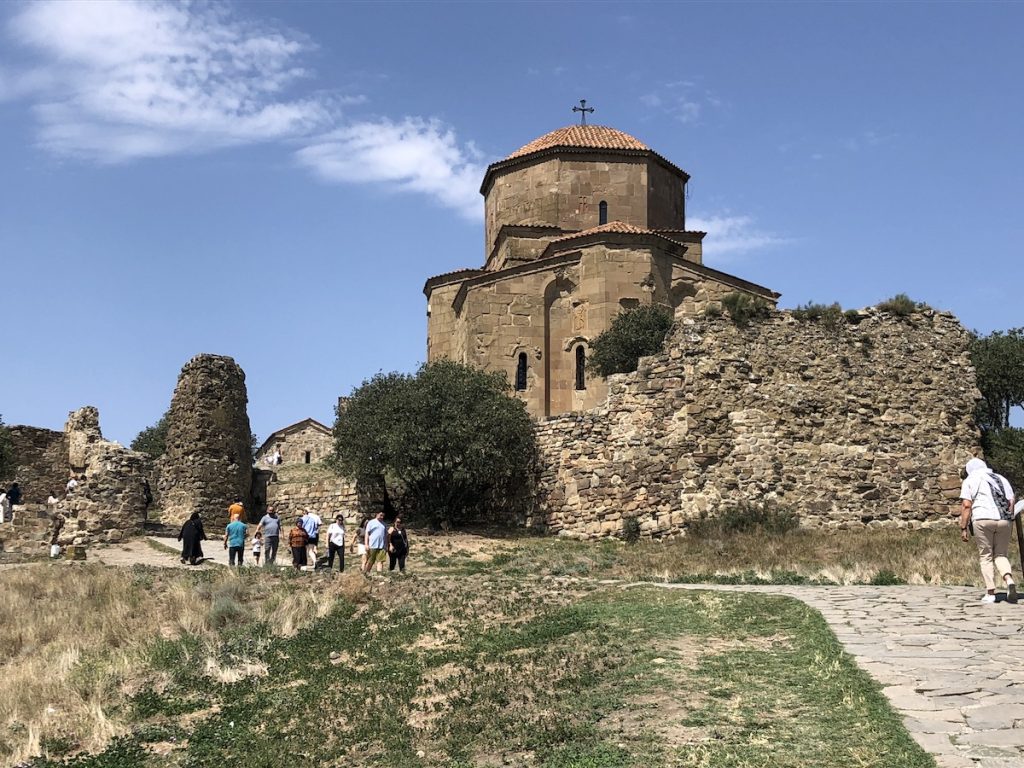
I shuffled through the dim interior, around a large wooden cross covered in dried leaves that sat beneath the dome, but it was difficult to feel reverent with so many tourists elbowing past.
I was surprised to see a large group of Jordanian visitors, and several others from the Gulf states. I never expected Georgia to be a significant destination for vacationers from these places. It would have been interesting to talk to them to find out what had drawn them here, but the sun was beating on my head like an anvil, and Mirian was waiting in the overheated car.
We were headed for the hometown of one of history’s most horrific mass murderers, who for 30 years imposed a system of thought on his people that has caused more misery than any other bad idea in Western Civilization.
I’ll take you there in the next blog.
Photos © Tomoko Goto 2023
